It’s always one of my favorite and first signs of spring–the return of the blackbirds. I often get common grackles before I get red-winged blackbirds at my own backyard feeders but I know the red-wings are around because I hear them.
Common grackles are big, bold and glossy birds with big yellow eyes. Their fan shaped tails are distinctive as is their raucous behavior. You always know when they are around.
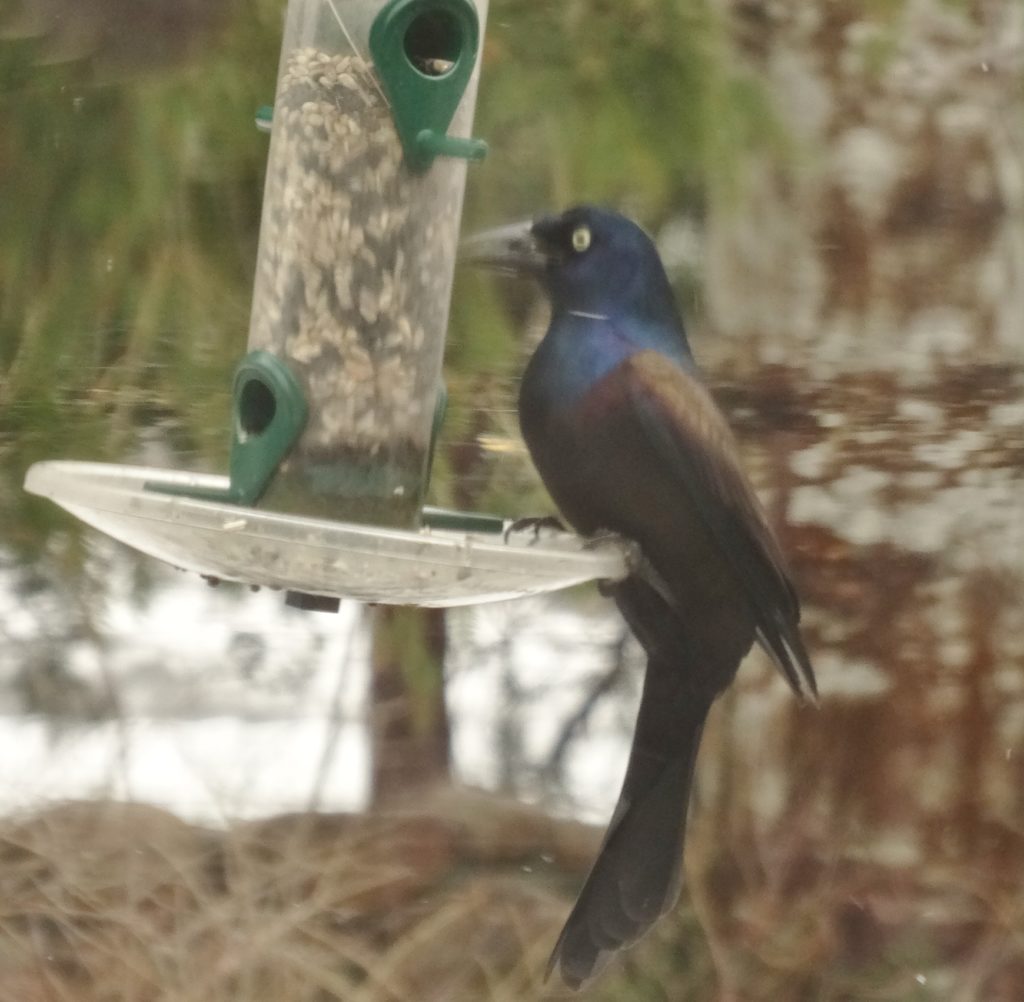 Male grackles are the first to arrive, though it is difficult to tell males and females apart. Their big, solid bills help the crack corn and also eat carrion. They will gobble down seed and suet faster than you can say, hey, leave some for the squirrels and they often bicker while doing so.
Male grackles are the first to arrive, though it is difficult to tell males and females apart. Their big, solid bills help the crack corn and also eat carrion. They will gobble down seed and suet faster than you can say, hey, leave some for the squirrels and they often bicker while doing so.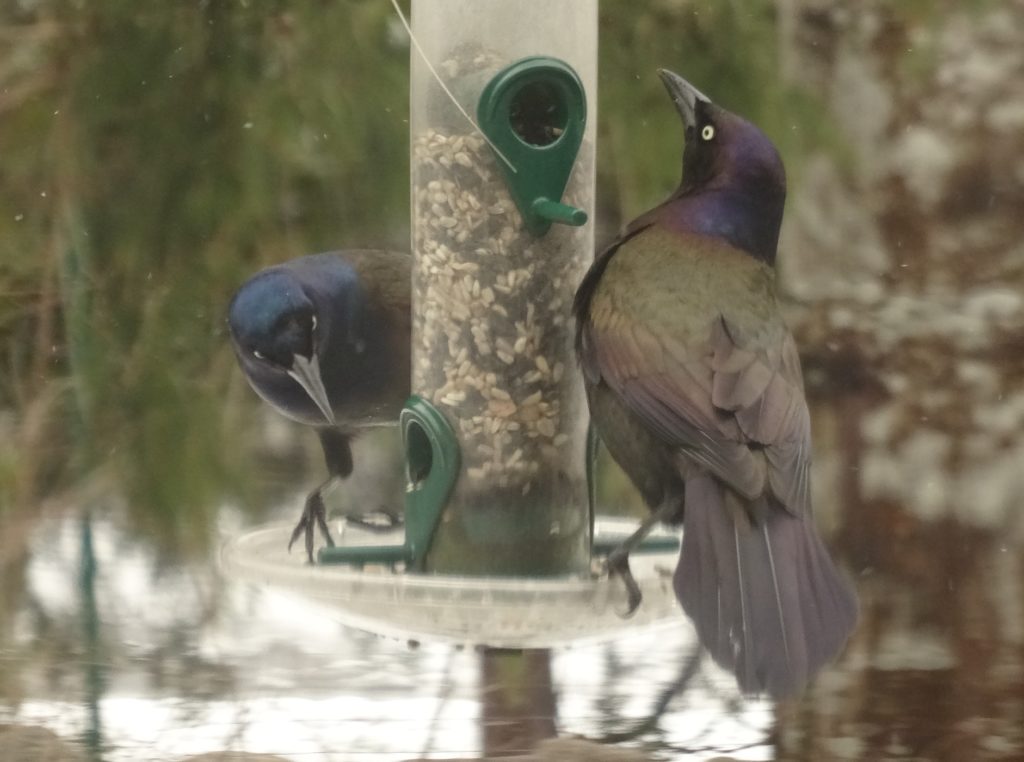 You have to give them credit in the looks department though. I think they are gorgeous birds, all that color glowing off them as they turn in the light. Their calls are loud and scratchy, often compared to the sound of rusty gate hinges.
You have to give them credit in the looks department though. I think they are gorgeous birds, all that color glowing off them as they turn in the light. Their calls are loud and scratchy, often compared to the sound of rusty gate hinges.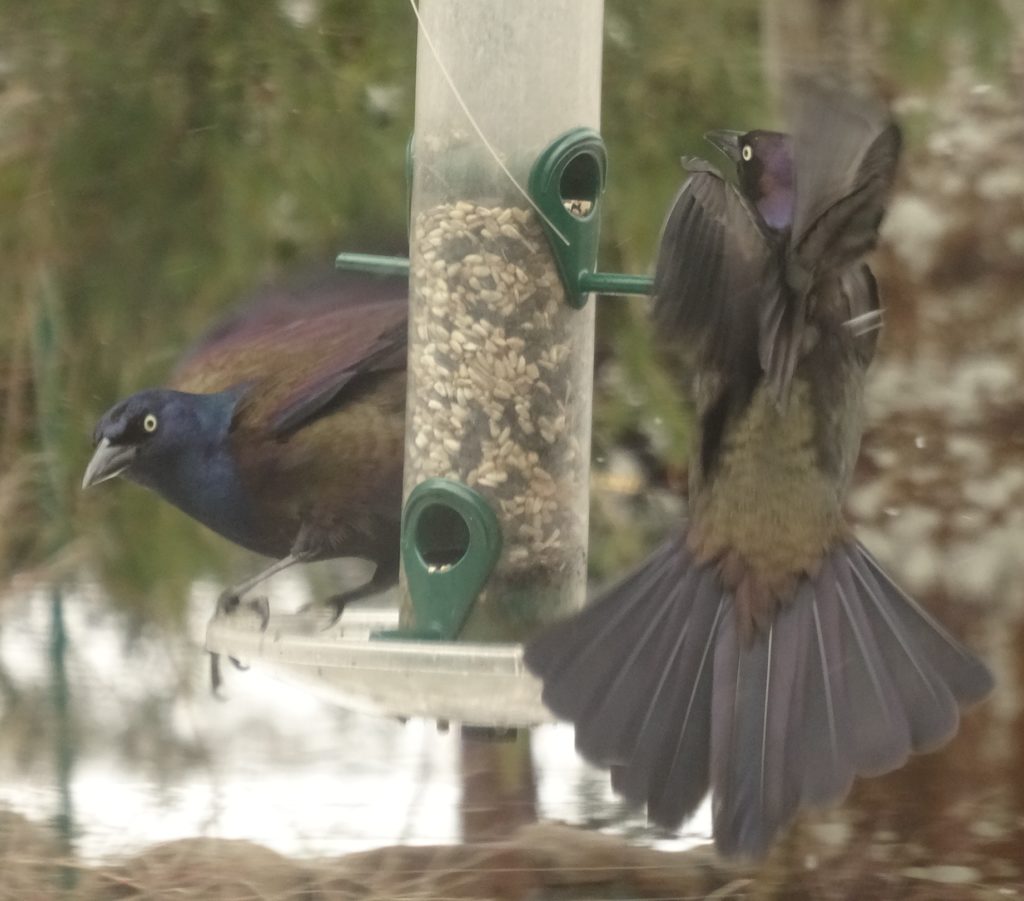 Red-winged blackbirds arrive in large flocks, often mixed in with grackles. Like grackles, the males arrive first and almost immediately begin to stake out territory.
Red-winged blackbirds arrive in large flocks, often mixed in with grackles. Like grackles, the males arrive first and almost immediately begin to stake out territory.
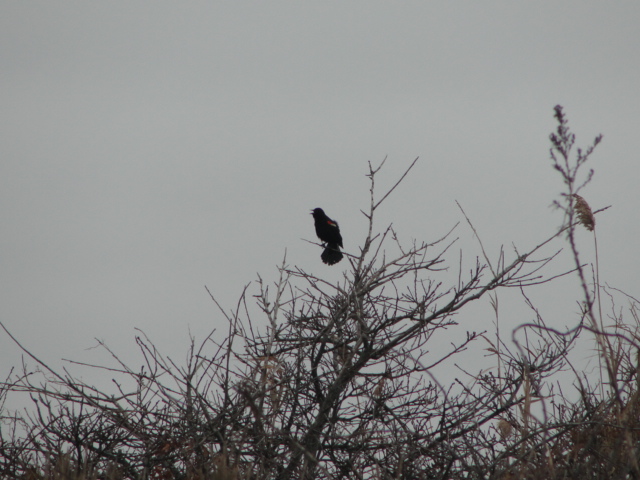 Check out this guy’s raggedy tail feathers. All migratory birds look a bit haggard when they first arrive. They are often thin, minus a few feathers and in need of a good rest. That doesn’t stop them from declaring their superiority, however.
Check out this guy’s raggedy tail feathers. All migratory birds look a bit haggard when they first arrive. They are often thin, minus a few feathers and in need of a good rest. That doesn’t stop them from declaring their superiority, however.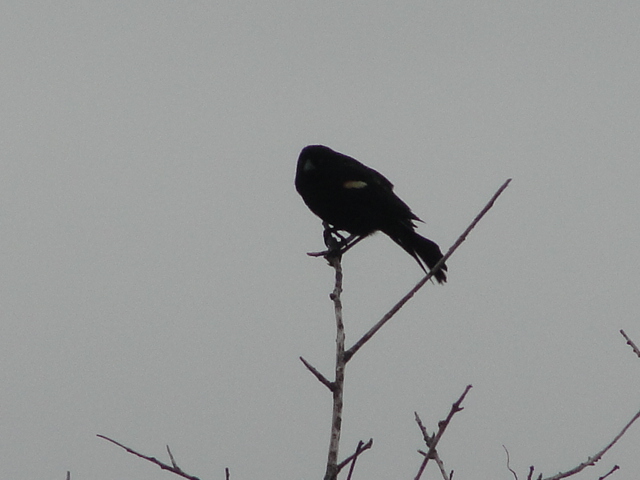 Flocks of blackbirds often quibble in the still bare trees and will sing, if we can call it singing, louder and louder as time goes on and the others don’t move. That’s when you’ll start to see some aggression as one bird will decide to chase the others away. This early in the spring the others often ignore such antics and just move away a foot or so, if that.
Flocks of blackbirds often quibble in the still bare trees and will sing, if we can call it singing, louder and louder as time goes on and the others don’t move. That’s when you’ll start to see some aggression as one bird will decide to chase the others away. This early in the spring the others often ignore such antics and just move away a foot or so, if that.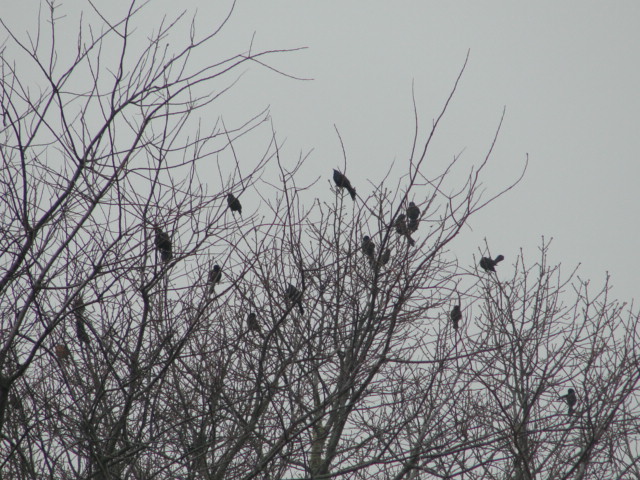 When they first arrive, the epaulets of the male red-winged blackbirds may appear dingy and lackluster. In a few weeks time the yellow and red will become quite bright, all the better to see and be seen in their world. Those bright red patches can be puffed out to seem much larger than they are. These are used as warning signals while setting up territories and chasing out would be interlopers but are also used to attract mates once the females arrive.
When they first arrive, the epaulets of the male red-winged blackbirds may appear dingy and lackluster. In a few weeks time the yellow and red will become quite bright, all the better to see and be seen in their world. Those bright red patches can be puffed out to seem much larger than they are. These are used as warning signals while setting up territories and chasing out would be interlopers but are also used to attract mates once the females arrive.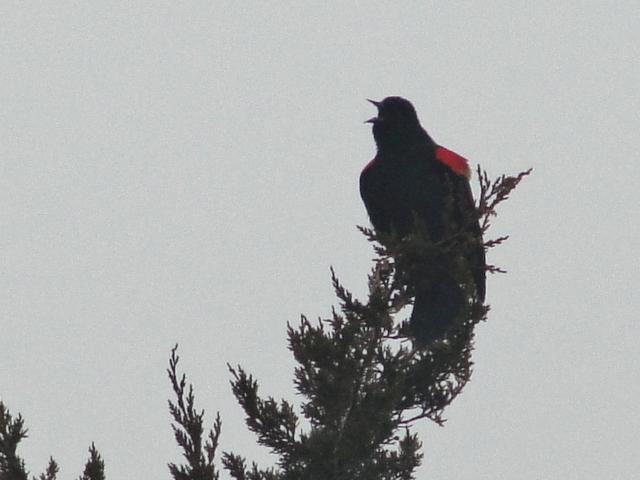 Most are familiar with the “conkle-a-REE!” call of the red-winged blackbird. If you haven’t heard it yet, keep listening. By the end of this week they should be singing Cape wide.
Most are familiar with the “conkle-a-REE!” call of the red-winged blackbird. If you haven’t heard it yet, keep listening. By the end of this week they should be singing Cape wide.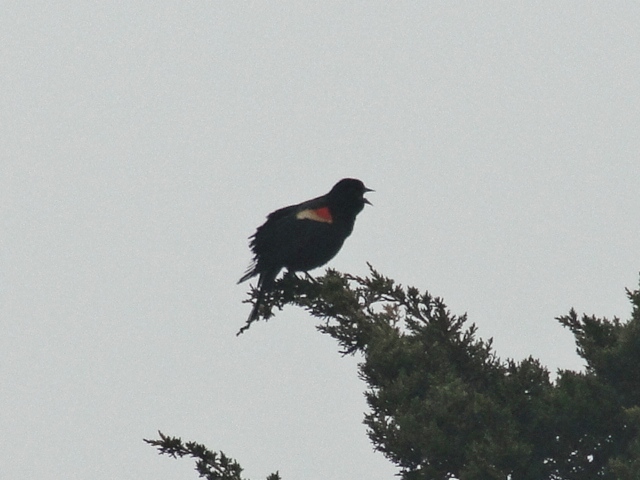 Have you seen a red-winged blackbird yet? Where?
Have you seen a red-winged blackbird yet? Where?
